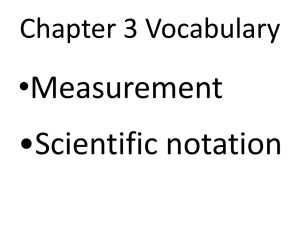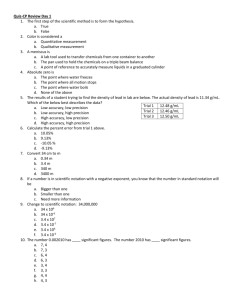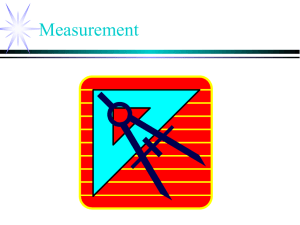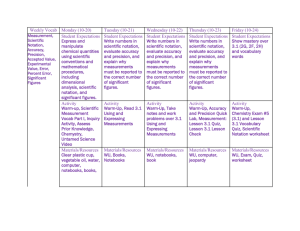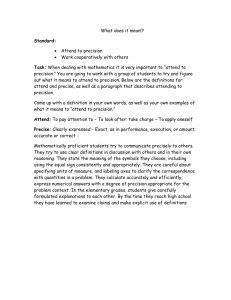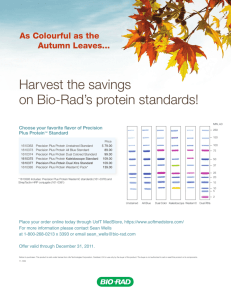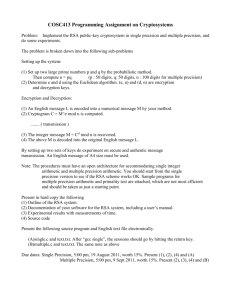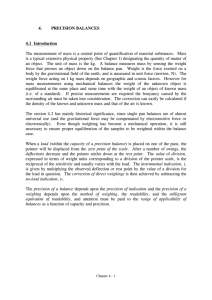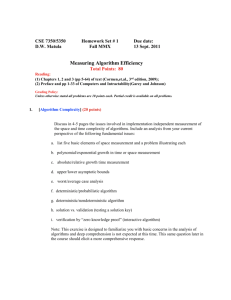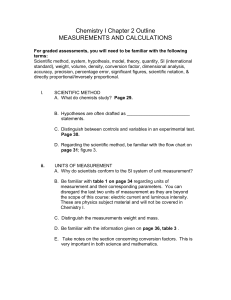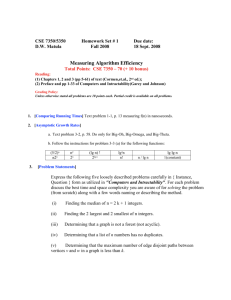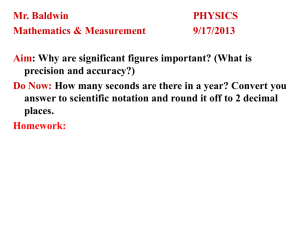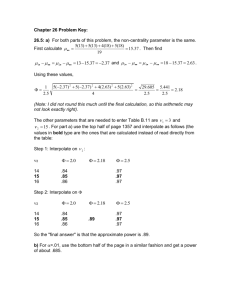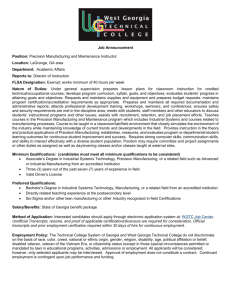Unit 3
advertisement
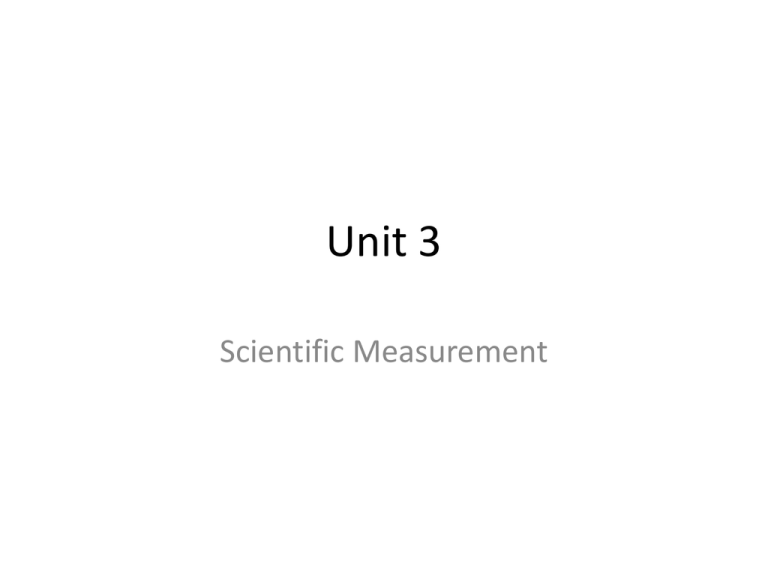
Unit 3 Scientific Measurement Types of Measurement • Qualitative – Gives results in nonnumeric, descriptive form. • Example: looking at a picture and evaluating if it’s a good picture or not. • Quantitative – Gives results in a definite form, usually in numbers. • Example: looking at a picture and recording the exact number of people, number of different kinds of animals, etc. Accuracy - v - Precision • Accuracy = “closeness” to the standard or exact value. • Precision = “closeness” to the standard or exact value of several measurements. *accuracy is the value of the measurement in terms of good or bad whereas precision is how consistent (reproducible) the measurement is. example: kicking field goals accuracy = kicking the ball between the uprights. precision = kicking the ball between the uprights and each kick travels the same path.**precision depends on more than one measurement** Scientific Notation • Chemistry involves very small and very large numbers. – Example: 1 gram of Hydrogen = 301,000,000,000,000,000,000,000 hydrogen molecules. This is a long number to write. • Use scientific notation: – 36,000 is written 3.6 x 104 (3.6 x 10 x 10 x 10 x 10) • If it’s a small number such as .00036 use scientific notation: – .00036 is written 3.6 x 10-4 Multiplication/Division/Addition/Subtraction • Mathematics Review (pg. 31) Significant Figures • = include all the digits that are known precisely plus one last digit that is estimated. – Write down 1-6 on pg. 33 in your book – Do pg. 34, #7 a-f
